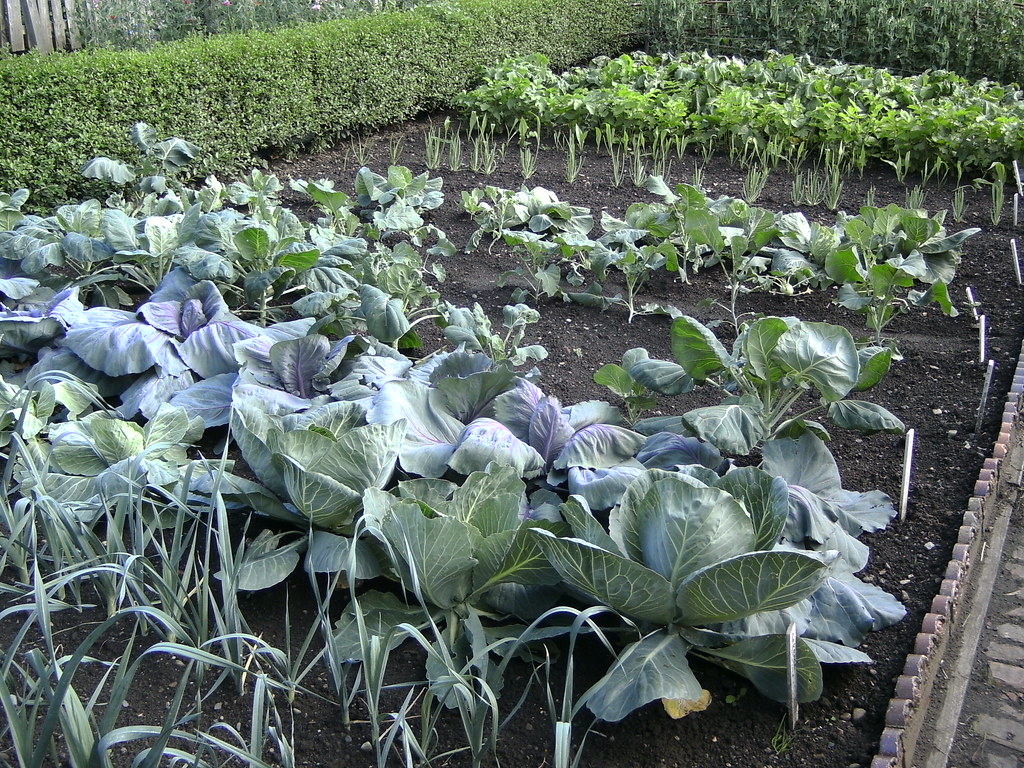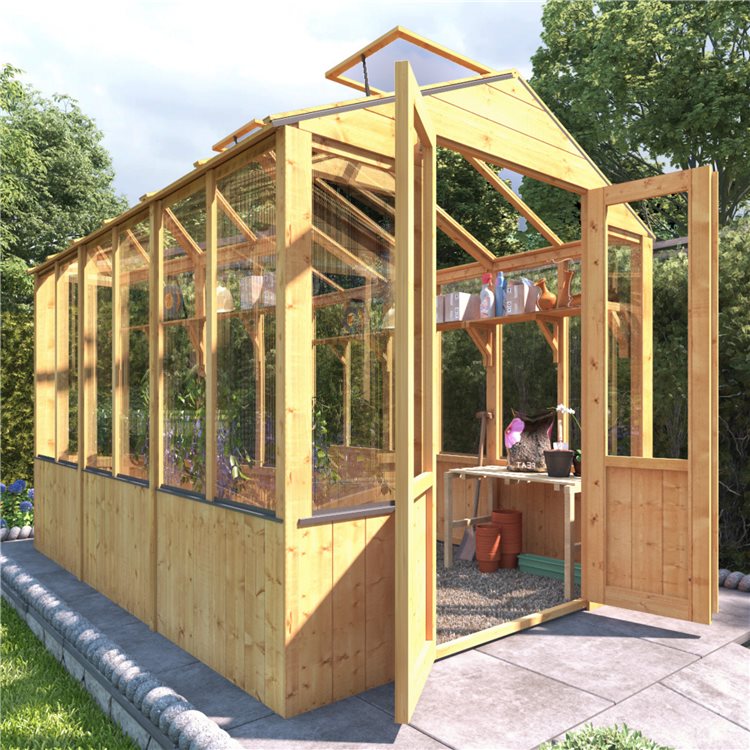Jump to:
In gardening, keeping track of what needs to be planted and when can be challenging as the seasons change. Even for seasoned gardeners, it’s easy to forget the ideal planting time for a particular flower. Not to mention whether it should be sown indoors, in a cosy greenhouse, or outdoors.
That’s where this planting calendar comes in, with tables covering January to May (winter to spring).

Handy Tips
Before we begin, here are a couple of things to help with all the planting you’ll be doing.
When it comes to planting indoors or outdoors, you can do “indoor planting” in a greenhouse—but only if it’s heated. It needs to stay warm throughout winter, as some plants require room temperature to thrive.
Also, note that planting inside and outside in separate months doesn’t mean you plant them twice. Instead, you’ll be moving the same growth from inside to its plot outside. This is common with vegetables (as you’ll soon see).
Most importantly, many of these timings depend on frost. Frosts happen when the temperature is so cold that a layer of ice forms on the ground. They can, in fact, kill plants by freezing the water inside them. So, when planting in spring, always be on the lookout for frost!
And if you didn’t get the chance to plant or sow something the previous month, you could always do it in the next! Refer to this full, year-round vegetable planting calendar.
Now, on to the planting calendar!

January

While January might sometimes feel like the heart of winter, it’s actually more like the beginning! A milder December can mean we don’t get our first frosts and a real taste of winter temperatures until January. Simply put, there won’t be too much planting to do.
You can still start your plants or flowers indoors, though, or even get those hardier species and cold-loving bulbs into the ground!
January calendar and tips
| January | Plant or Sow Indoors: | Plant or Sow Outdoors: |
|---|---|---|
| Flowers: | Snapdragons* Geraniums Begonias Lobelias Carnations Sweet Peas* | Lily Bulbs* |
| Fruit and Vegetables: | Herbs* Aubergine Greenhouse Tomatoes | Garlic* Onions Cane Berries (Raspberries, Blueberries) Bare-root Fruit Trees |
- Snapdragons: These colourful flowers need a long growth period before summer arrives, so it’s essential to get them going early. Sow them indoors and keep them comfortable until late spring.
- Sweet Peas: When planting sweet peas indoors or in a greenhouse, make sure they’re in a spot that gets plenty of sunlight.
- Herbs: If you’re planning to grow herbs this year, you can give them a head start by starting them indoors.
Lily, Onion, and Garlic Bulbs: These bulbs are best planted in winter, so get them into the ground as soon as possible for the best results! With lilies, make sure to plant them in a partly shaded spot. Don’t worry, as they’re all frost-tolerant.
February

February is still full of wintry conditions and frosty mornings. By the end of the month, things should start to perk up a little. This month can be quite busy if you’re planning to grow lots of vegetables, as many will need to be started indoors now. The same goes for annual, biennial, and perennial flowers.
No promises, though; this is the UK, after all! If you need help protecting your plants from the cold, take a look at our guide here.
February calendar and tips
| February | Plant or Sow Indoors: | Plant or Sow Outdoors: |
|---|---|---|
| Flowers: | Dahlias* Annual flowers Biennial flowers Perennial flowers Petunias* Impatiens* | Bare-root roses Winter-flowering shrubs such as Daphne and Witch Hazel Nicotiana* |
| Fruit and Vegetables: | Artichoke Broccoli Brussel Sprouts Cucumber Kohl Rabi Pepper Chillies Basil* | Carrots Parsnips Rhubarb |
- Dahlias: Take extra care when starting dahlias indoors, especially in a greenhouse, as they can’t drop below 10°C. They also prefer to be planted in compost.
- Petunias: Like dahlias, petunias need very specific growing conditions. They like it warm, so keep them at a toasty minimum of 24°C.
- Impatiens: The flower impatiens, or “Busy Lizzie,” needs plenty of sunlight while growing. A bright windowsill is the best spot for them.
- Nicotiana: While we’ve listed nicotiana for February, it’s best to plant them right at the end of the month to avoid most of the cold.
- Basil: If you’re growing herbs indoors, don’t start your basil until February, and keep it inside until summer is in full swing.
March

The arrival of March means the arrival of spring. During this month, you’ll start to see the first signs of the changing season. For one, snowdrops are beginning to appear, and plump buds are forming at the tips of trees.
But don’t be fooled by these beautiful sights! March is still late winter, so the cold isn’t gone just yet. Planting around this time can be tricky, as you need to wait until the late frosts have passed. Keep an eye on the weather forecast and hold off until the end of the month.
March calendar and tips
| March | Plant or Sow Indoors: | Plant or Sow Outdoors: |
|---|---|---|
| Flowers: | Climbing annuals Cleome seeds* Cosmea seeds Gazania* Marigolds | Sunflowers Poppies Cornflower Wildflowers Deciduous trees Forced flower bulbs* |
| Fruit and Vegetables: | Asparagus Artichoke Broccoli Brussel Sprouts Celeriac Celery Marrow Shallot Squash Sweetcorn | Peas Broad Beans Beetroot Cabbage Kale Kohl Rabi Leek Lettuce Radish Rocket Samphire Spinach Spring Onion Turnip |
- Cleome seeds: As with impatiens, grow your cleome seeds on a sunny, warm windowsill.
- Gazania: Start your gazanias indoors in March, but as soon as the last frost has passed, get them outside!
Forced flower bulbs: If you’ve “forced” any flower bulbs by keeping them in a dark place, now’s the time to bring them out. They’ll complete the rest of their growth and flowering stages outdoors.
April

Spring should be in full swing by the time April rolls around. Flowers will be sprouting wherever you look, maybe even the first few leaves on trees (although that’s usually more of a May sight). This also means less planting to do and more relocating as you take the vegetables and flowers you started indoors out into the garden.
It’s time to get those garden beds working hard!
April calendar and tips
| April | Plant or Sow Indoors: | Plant or Sow Outdoors: |
|---|---|---|
| Flowers: | Nasturtiums Dianthus Petunia Scabious Salvia Ageratum Zinia Rudbeckia | Clarkia Lagurus Monarda |
| Fruit and Vegetables: | Melon | Cauliflower Chard Courgette Chives Coriander Dill Parsley Pak Choi Watercress Brassica Potatoes |
May

Sunny days, flowers, and greenery everywhere you look—that’s right, May is the time for growth! By now, you’ll be seeing the fruits of your labour from the winter months.
The focus for May is getting your flowers out, as well as the rest of your fruit and vegetables. The soil will be warm and loose enough for most flowers. But you don’t have to stop growing indoors! There are still a few things you can start inside to keep them safe before summer arrives.
Stray cold days may still pop up, so keep an eye out and cover any veg or flowers if they need extra protection.
May calendar and tips
| May | Plant or Sow Indoors: | Plant or Sow Outdoors: |
|---|---|---|
| Flowers: | Climbing perennials Foxgloves Dianthus Helipterum Larkspur Primrose* Sweet William | Phlox Candytuft Godetia Nigella Damascena Foliage bedding Alyssum Hydrangeas Lavender Rudbeckia Snapdragons Marigolds |
| Fruit and Vegetables: | Sweetcorns | Artichoke Beans Broccoli Brussel Sprouts Celery Courgette Cucumber Marrow Pepper Pumpkin Swede Tomato plants* |
- Primrose: Though a summer flower, primrose needs to be started indoors in early May. Sow the seeds in soil or organic matter, then place the tray in the fridge for three to four weeks. After that, keep it at room temperature for six weeks until the seeds germinate. They’ll be ready for outdoor planting in late summer.
- Tomato plants: You can plant tomato plants outdoors from May, but make sure you’ve got a variety that can handle outdoor temperatures. If not, keep them in their more natural environment, like a greenhouse.
Time to Get Planting!
Winter and spring are the trickiest times of the year for planting. But with this detailed month-by-month planting calendar and a keen eye on the cold, you should be able to dodge the frosts and head into summer with a garden full of life and colour!
If you’re looking to step up your gardening with a greenhouse, look no further than our BillyOh models. We’ve got a great range of greenhouses for sale at fantastic prices. Or click the button below to browse!
For more growing tips, read this next: Which Plants Should You Bring Indoors Over Winter?





